Focusrite Scarlett 2i2 vs Focusrite Scarlett Solo: Which should you buy?
Don't see red because you can't decide on which Focusrite audio interface to buy – allow us to help you choose
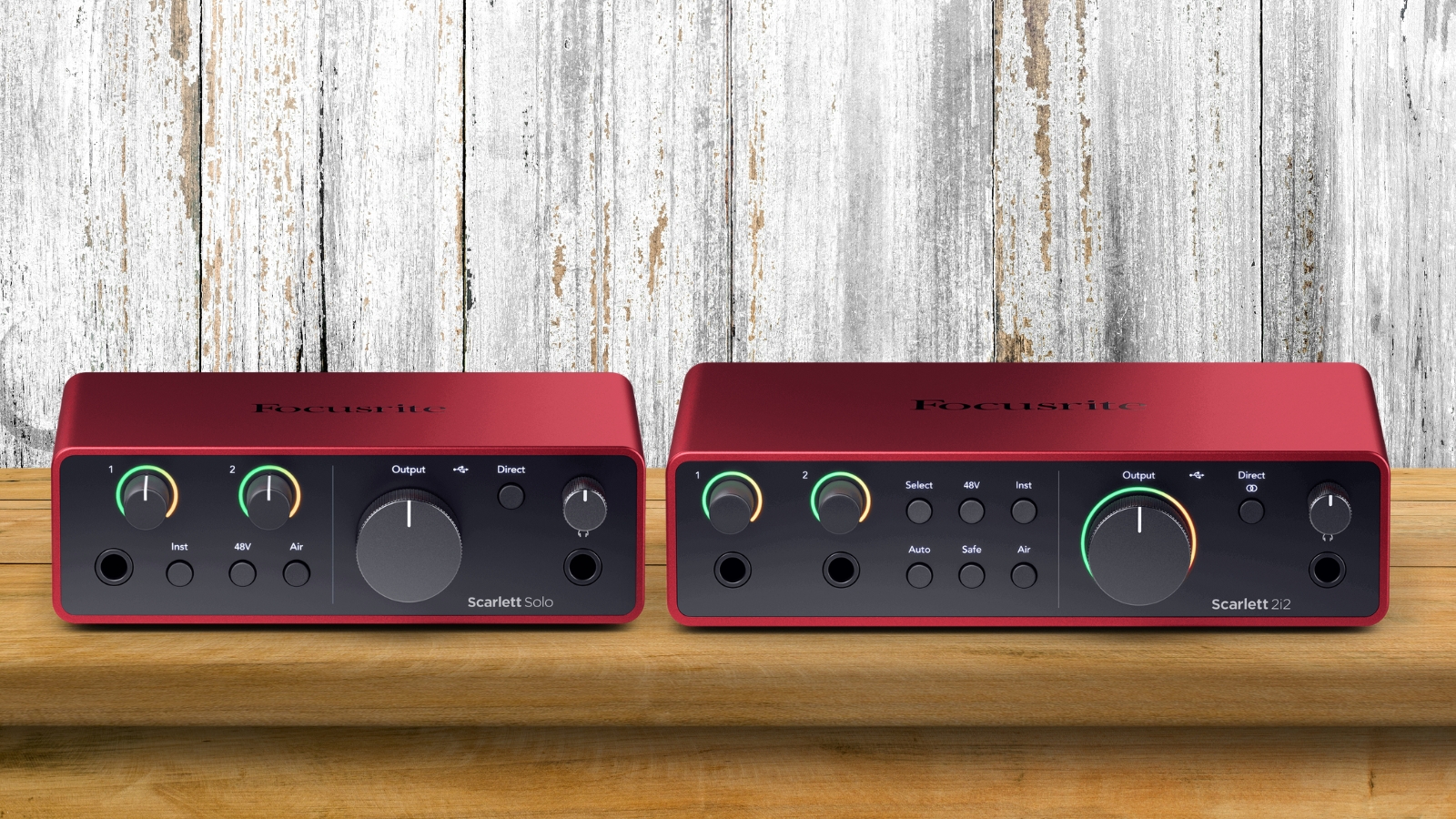
Today in the MusicRadar versus challenge are two equally well thought-of, broadly quite similar devices, from a brand with plenty in the way of home studio heritage. The Focusrite Scarlett 2i2 and Focusrite Scarlett Solo are both audio interfaces, offering up recording and playback functionalities, and they both come in a lovely shade of shiny red. Or scarlet, more accurately. Hence the name. So where’s the comparison?
In this guide, we’ll outline some of the key differences between the Scarlett 2i2 and the Scarlett Solo and why you, as a producer, musician, podcaster, or streamer should care. We'll be referring to the Focusrite Scarlett 4th Gen models, so let’s begin.
Focusrite Scarlett 2i2 vs Focusrite Scarlett Solo: At a glance
At a basic level, the Scarlett 2i2 and Scarlett Solo are the same product. They boast the same connectivity types, the same inherent sonic profile and the same robust construction. Either one of these will give pretty much any home studio enthusiast the tools they’re looking for to achieve their production goals. Where the two differ is in how much you, the producer, want to achieve concurrently.
To explain, both devices fulfil the basic requirements of a USB audio interface. You can connect electric guitars, microphones, synths and more to the front panel, and in doing so record these audio sources into your digital audio workstation (DAW) of choice – think Garageband or Ableton. Herein lies the key difference between the two devices. With the 2i2, you get two fully-fledged microphone preamps and can record two mic sources concurrently, e.g. a voice and a guitar into separate audio tracks. With the Solo, you can only record one microphone at a time. It’s this tiny difference that could make all the difference for you.
To the back of both interfaces, you’ll find connections for a set of studio monitors, which will give you the ability to edit, arrange and mix your sounds much better than using studio headphones, although on the front you’ll find a headphone slot too. You can also tweak the various levels of audio coming in and out of the unit to find the sweet spots you require.
Focusrite Scarlett 2i2
- Connectivity: USB-C
- A/D Resolution: 24-bit/192kHz
- Preamps: Two
- Instrument inputs: Two
- XLR inputs Two
- Analogue outputs: Two
Focusrite Scarlett Solo
- Connectivity: USB-C
- A/D Resolution: 24-bit/192kHz
- Preamps: Two
- Instrument inputs: One
- XLR inputs: One
- Analogue outputs: Two
Focusrite Scarlett 2i2 vs Focusrite Scarlett Solo: Hardware and features
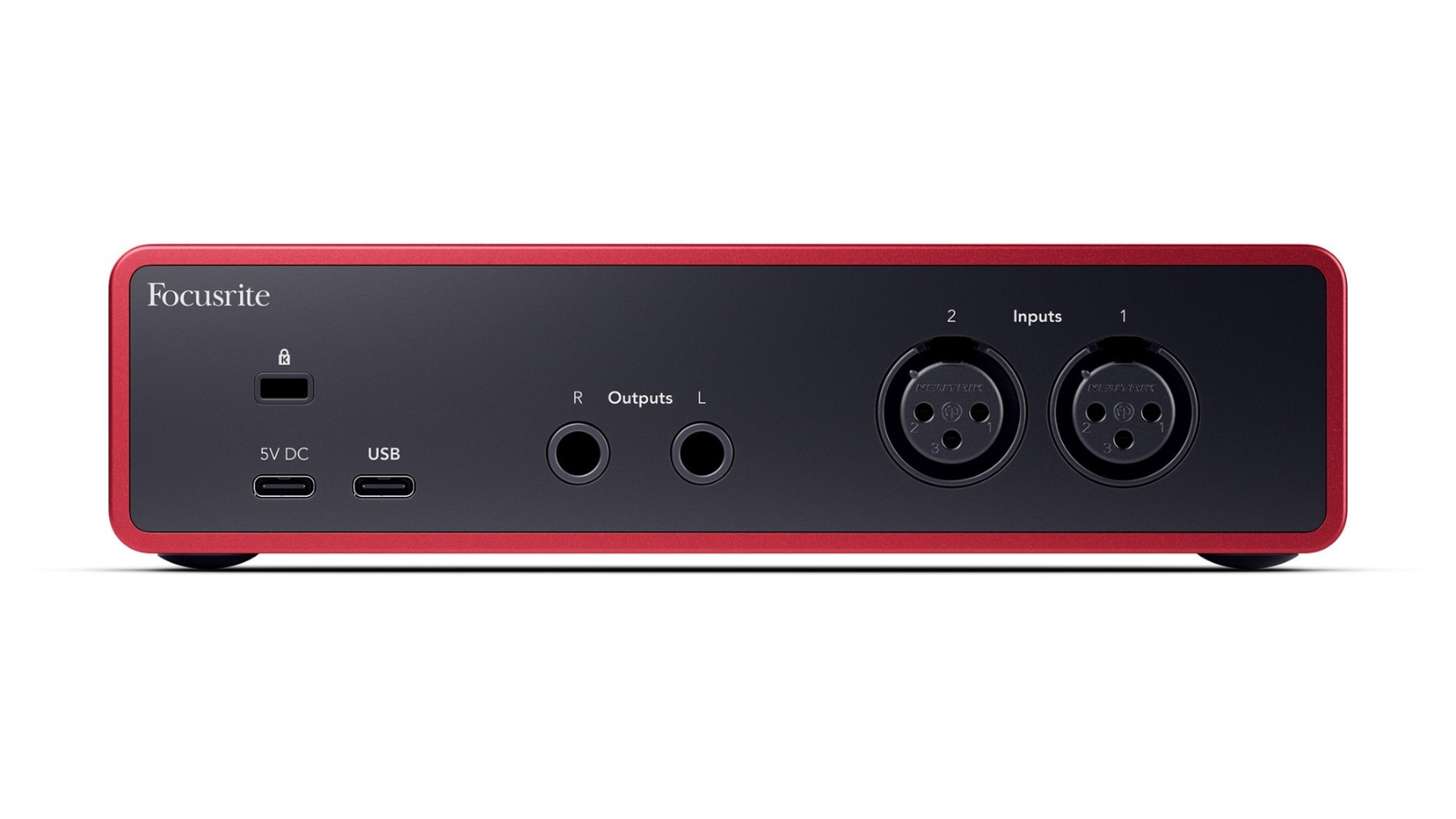
Since it’s the amount of hardware/connectivity you get that is the primary difference, rather than the capabilities of it, we can cover both bases quite nicely here. At their core, both devices centre around two of the famous Focusrite mic preamps. However, the Solo has a single instrument input on the front and a single Neutrik XLR input on the rear, while the 2i2 features two instrument inputs on the front and two Neutrik XLR jacks on the rear.
Irrespective of the input placement, these deliver crystal clear audio quality, with plenty of headroom (i.e. volume before the sound distorts) and are ideal for a range of instruments. Guitarists, for example, making use of software-based amplification will benefit hugely from a clean, clear signal reaching the amp-sim applications, while vocalists and podcasters will find the Focusrite preamp gives them plenty of clean, accurate output to play with later.
Get the MusicRadar Newsletter
Want all the hottest music and gear news, reviews, deals, features and more, direct to your inbox? Sign up here.
Additionally, both Focusrite audio interfaces feature either one or two sets of additional controls over the preamp, which can be accessed from the front of the devices. This includes the ability to turn on phantom power for using condenser microphones, along with a button labelled ‘Air’, which adds an extra sprinkle of high-end boost for enhancing vocals or acoustic instruments. Both feature an instrument button to bring the level for plugging guitars in, and the 2i2 has a handy auto gain feature that will set a proper level for your instrument after playing for ten seconds.
The final feature we’d draw attention to is the ‘halo’ LED around the gain control. This is both visually appealing and practically useful, as it gives you instant feedback concerning whether your incoming audio signal is too loud and will therefore be unusable when you come to edit it. We’ve all recorded what we think is the perfect take, only to find the audio has clipped and distorted on the way in. Think of the halo as a visual insurance policy against this happening.
Winner: The fact that the Scarlett 2i2 has two preamps, and therefore has twice as much potential utility, makes it the winner here. We also like the Air functionality and found that it genuinely added something desirable to acoustic guitar recordings.
Focusrite Scarlett 2i2 vs Focusrite Scarlett Solo: Build quality and design
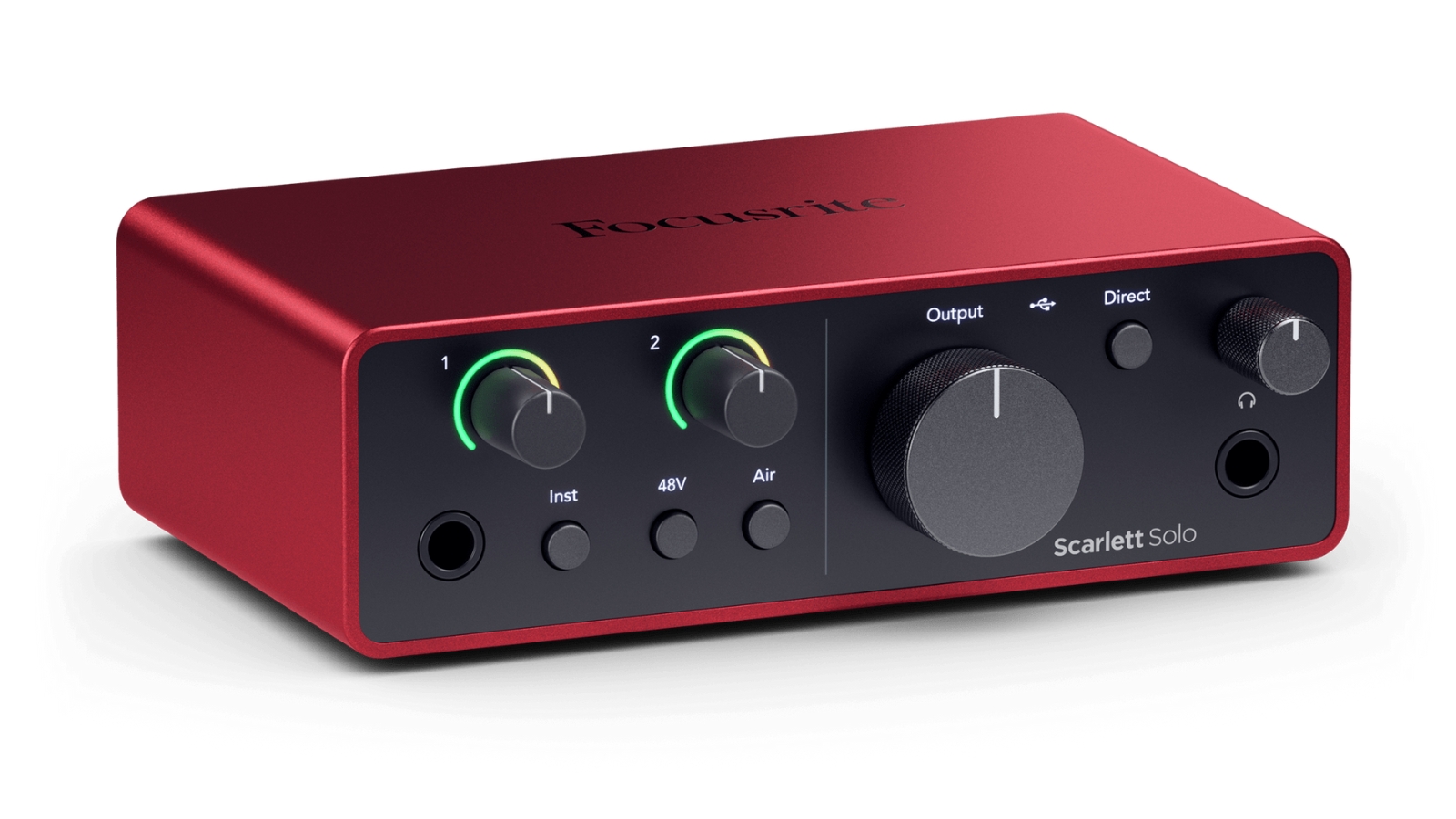
Both the Scarlett Solo and the Scarlett 2i2 are using the 4th generation preamps, meaning both have enjoyed some minor iteration of their design in recent years. Largely the product dimensions have remained the same, and we have no complaints about that. Larger models in the range can be wide enough to warrant rack-mounting, but both the Solo and the 2i2 will happily reside on a studio desk or small shelf.
Both employ nice, rigid metal casing so they’ll survive the odd ding as you rearrange your studio workspace. We also find knobs and buttons across both units to be wobble-free, and we're particularly pleased that both units have USB-C connectivity as we find that the least wobbly of all the USBs. You may have your own opinion about input/output placements; some interfaces seem to locate all inputs and outputs to the rear, but we’ve always preferred the more logical layout favoured by both devices here, with inputs on the front and outputs on the rear.
Winner: Hard to pick a winner from these two when they are essentially the two babies of the Scarlett family and look, feel and act exactly as you’d hope. Therefore a victory for consistency across the line-up, if anything.
Focusrite Scarlett 2i2 vs Focusrite Scarlett Solo: Usability
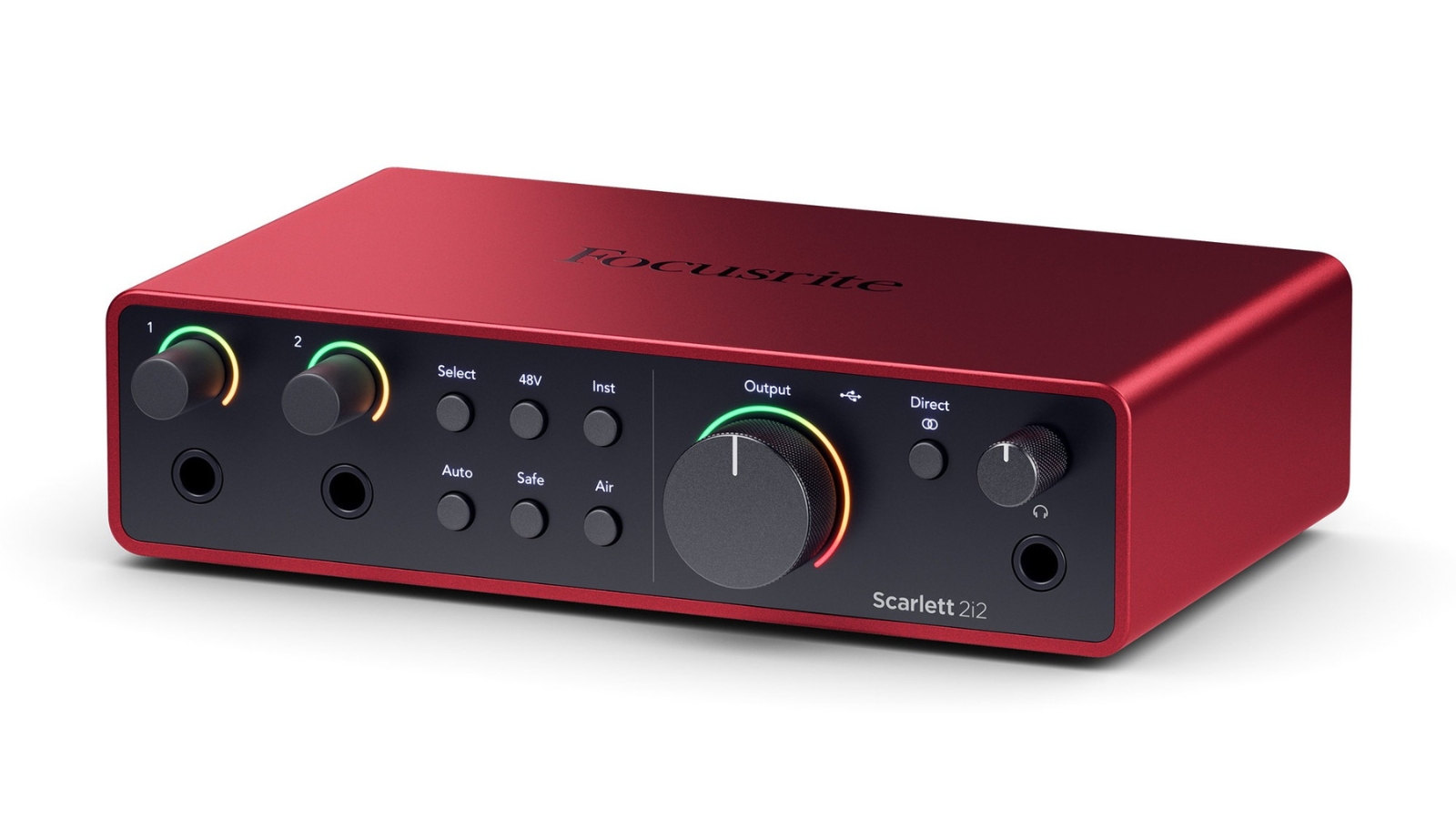
Judging usability when it comes to audio interfaces is, at the same time easy and difficult. This is because some of the functionality and operations happen on the hardware unit itself, while others are dependent either on the bundled software or how it plays with your software of choice. Thankfully, on both accounts and with both interfaces, there were zero problems to report. We tested both units on Mac and Windows computers, along with an old iPad Pro, and found it was as simple as you’d hope and expect it to be. That’s the benefit you get from choosing arguably the best-known name in home studio audio interfaces. They just work.
A couple of features we would highlight, which aid usability, are the direct monitor button on the front of the unit, and the ‘gain halos’ mentioned previously. Direct monitoring means you can quickly and easily hear, in real-time, what you are recording without any latency, which makes for a much less stressful recording experience, while the gain halos are superb for quickly and visually nipping any audio gain problems before they come back and bite you later.
Winner: It’s hard to call this anything other than a draw. Both are bus-powered, meaning they don’t require external power supplies or batteries, and both have the same built-in tools to ensure using them is as simple as plugging in.
Focusrite Scarlett 2i2 vs Focusrite Scarlett Solo: Sounds
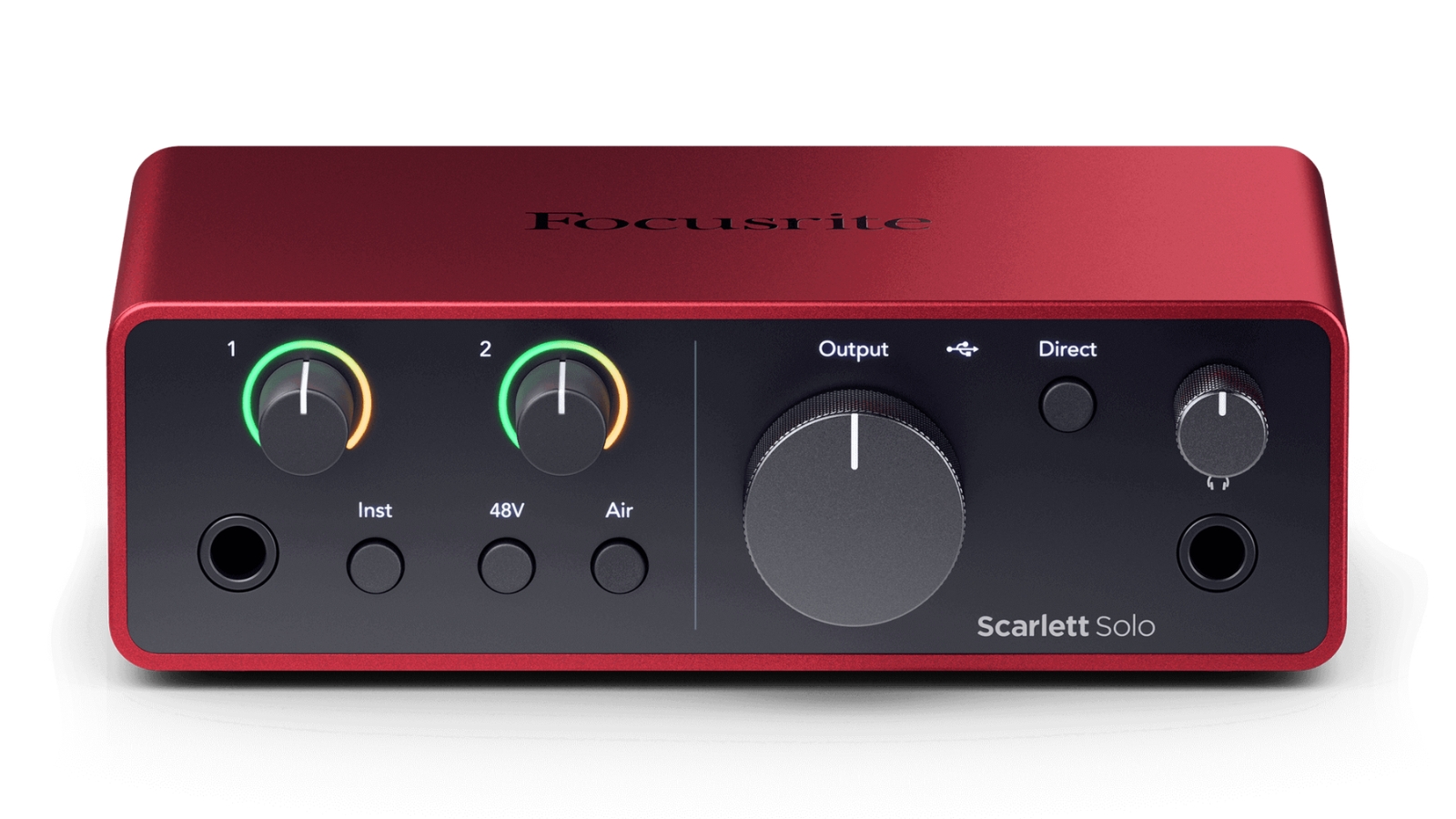
When you opt for a Focusrite Scarlett – of any variety – you’re buying into a tonal ecosystem that delivers what home studio producers need. Unlike with guitars, amps or synths, when you are sourcing an audio interface you’re going to want one that offers clarity and cleanliness of tone over any colouring. Thankfully, the Scarlett line-up is tailor-made for this, with both the 2i2 and the Solo delivering just about the best recording experience you’ll get in this price bracket.
Whether you’re recording microphones, using the preamp or instruments, you can rest assured you’re getting a fully flat frequency response, meaning whatever the human ear can hear, the audio interface can record. Additionally, the 24-bit/192kHz analogue-to-digital conversion is among the best in class – certainly for the money – so everything you record will be in high enough resolution that you can mix and master with the best audio you could hope for.
Special mention goes to the additional software both units come bundled with (after registration), including a version of Ableton Live and some other effects and tools to get you started.
Winner: Again we're going to have to call this one a draw. Both units have the same top quality mic pres and we can't fault either here in terms of sound quality.
Focusrite Scarlett 2i2 vs Focusrite Scarlett Solo: Verdict
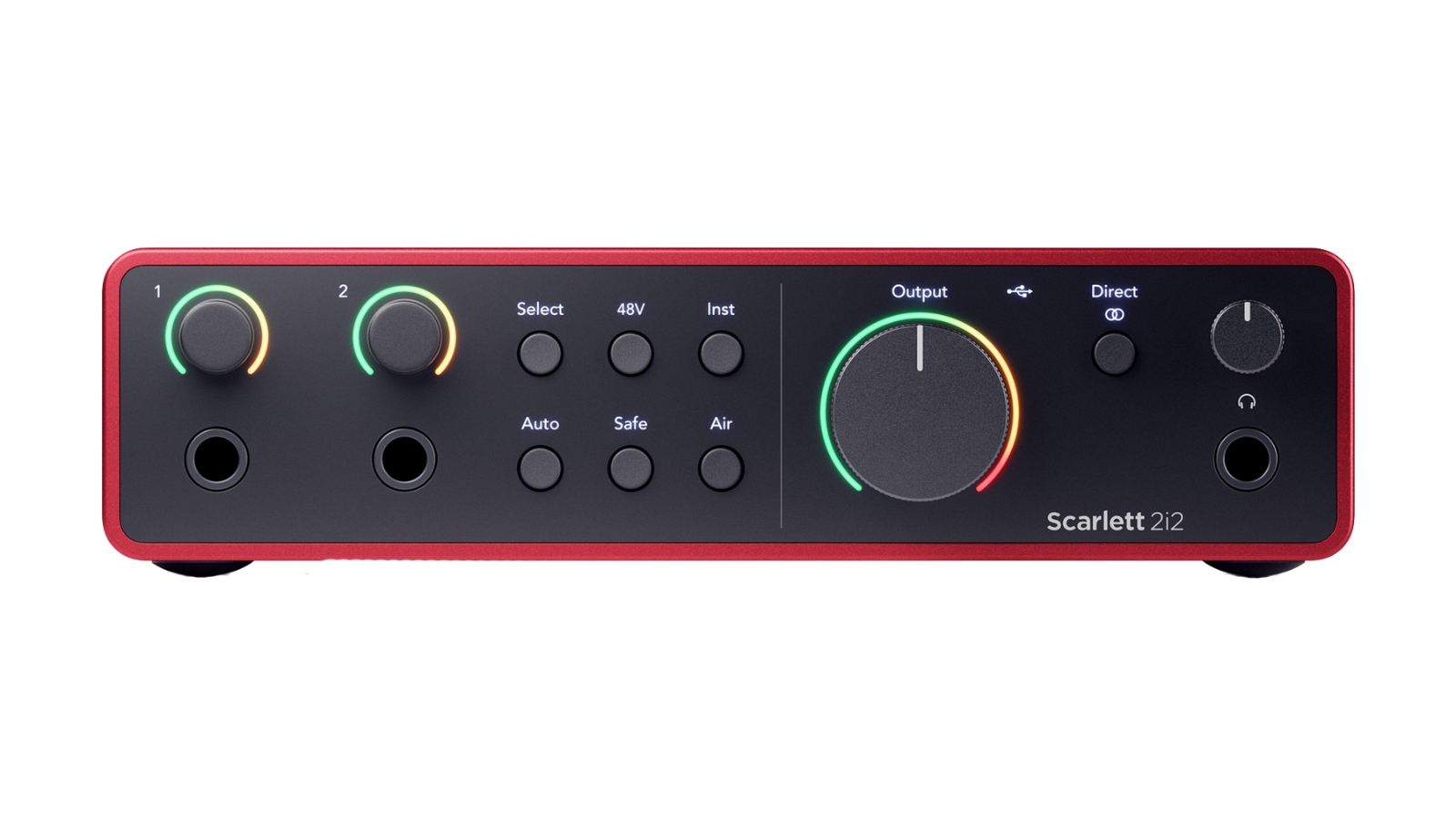
As we might have mentioned once or twice, the Focusrite Scarlett 2i2 and Scarlett Solo are, largely, the same device only with a couple of bits added or taken away. Whichever you choose, you’re getting access to one of the highest quality pound-for-pound recording experiences available in 2023. Whether you’re recording music or podcasting, the Scarlett range is designed to offer up high-quality tools and a superb, intuitive user experience.
Winner: Really, the decision-making process will come down to how you intend to use the interface. Both have the same high-class preamps, and both feature dual inputs, although the 2i2 has two of these on the front panel, whilst the Solo version only has one. If you’re on the fence, however, we’d always advise going with the more capable version if your budget allows it. Better to have more options and not need them than to find yourself six months down the line wishing you’d gone bigger.
Chris Corfield is a journalist with over 12 years of experience writing for some of the music world's biggest brands including Orange Amplification, MusicRadar, Guitar World, Total Guitar and Dawsons Music. Chris loves getting nerdy about everything from guitar and bass gear, to synths, microphones, DJ gear and music production hardware.










